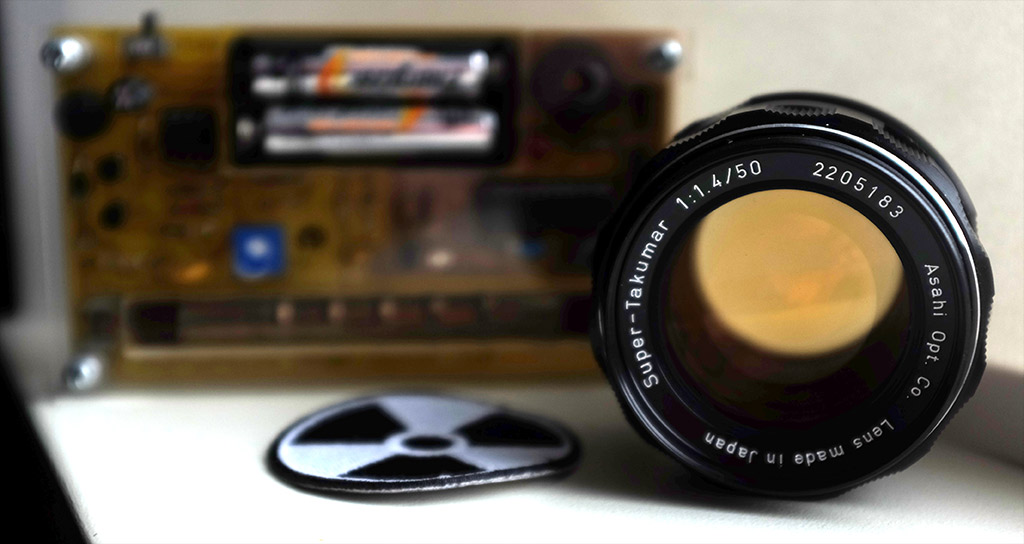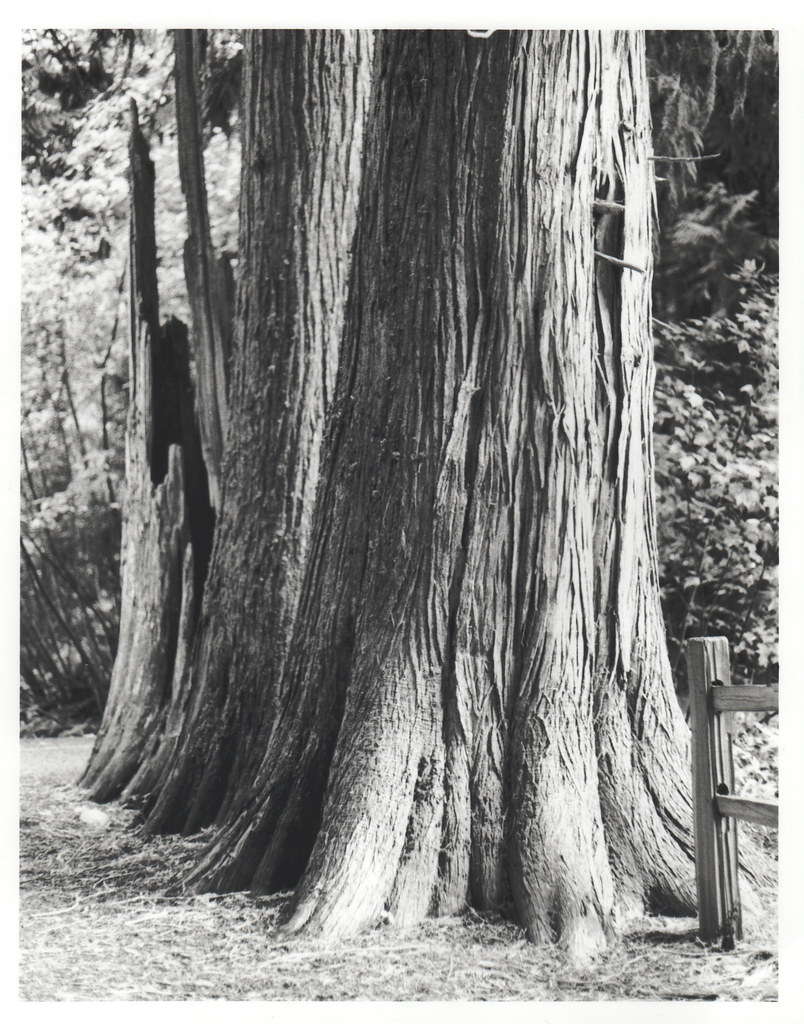
The yellowing of the lens caused by the radioactive decay.
Last week marked the ten year anniversary of the Japanese earthquake and resulting tsunami that caused the Fukushima Daiichi nuclear disaster.
In the years following that tragic event, flotsam began arriving on the Pacific West Coast. Volunteers making great effort to return personal items back to family and loved ones in Japan.
Models showed the ocean currents and their possible nuclear contamination as it crossed the Pacific Ocean.
My interest in sensors and environmental monitoring led me to the relatively inexpensive Mighty Ohm Geiger Counter kit. A fun open-source microcontroller-based Geiger counter kit you solder together yourself.
Years ago I began collecting vintage film cameras, still occasionally shooting and developing my own B&W film today. Ebay was a great source for these antique objects of optical and mechanical precision, which were practically given away in the early days of the digital camera’s rise. Some film cameras are still sought after for collectibility and some manual focus film lenses got a new life with the use of adapters on digital cameras.
While I had an interest in detecting any increased environmental radioactivity from the event as a citizen scientist, my main motivation was testing old film camera equipment.
One of my favourite Ebay film camera purchases that I still use today is the Asahi Pentax Spotmatic SP. I got it as a “kit” with a large assortment accessories and quality lenses. At nearly 60 years old, these Super-Takumar screw thread M42 mount lenses have such a precise feeling. The range of prime lenses in this purchase included:
Wide angle 28mm f3.5, Zoom 135mm f2, and Fast 50mm f1.4.
Small yet surprisingly hefty, the only way I can describe the focus dial is like the volume knob on an expensive stereo. Smooth resistance. The aperture dial clicks into each stop without wiggle. Lens covers are friction-fit without mechanical fasteners, hoods and cases, straps all immaculate condition and with such tight tolerances. I need a thesaurus for additional words for “precise”.
From this camera, and the 50mm f1:1.4 specifically, I created one of my personal favourite pictures of all time.

I have however heard stories of some lenses being radioactive and also that some cameras may have been looted from nuclear contaminated sites such as Chernobyl.
In the late ’90s my camera of choice was a lomo smena 8m. Used mainly backpacking, there is really no lighter fully manual 35mm camera.
There are plenty of forums, articles, and Youtube vids, listing/discussing radioactive lenses. Thoriated glass was used for it’s optical properties perhaps before the effects of prolonged exposure to radiation were fully understood. While many dismiss the risks associated with owning or using this radioactive equipment, I’ll leave it for the reader to make their own informed decisions.
A comical radiation dose chart from XKCD.com
I’ll admit, until I had a source of beta or gamma radiation, my geiger counter was essentially a really great random number generator. Blip… blip….blip. blip
My radiation detector is capable of detecting beta and gamma radiation but alpha radiation can not detected. A bit more reading about Thorium232 tells me that it actually decays emitting alpha radiation though.
Hang on, what’s going on?
Turns out the decay chain releases a “cascade” of fun alpha, beta, and gamma particles. The latter saturating the Geiger-Mueller tube sensor.
From the serial monitor getting close had the following readings:CPS, 18, CPM, 1080, uSv/hr, 6.15, FAST
Though detectable only close to the source, it’s hard to read these kind of numbers and say I want to go out and hold this up to my face for half a day.
And keep it the house with my family for years to come? Nope. Topes lose, Topes lose.
I wouldn’t even consider selling this lens at this point, even to someone who fully acknowledges the risks. Because while they might accept it, the logistics people, delivery drivers, shippers or anyone in between didn’t agree to that.
Question is, where and how do you dispose of this hazardous, gorgeous, and “precise” material?
UPDATE: I’m now in touch with the Historic Artefact Recovery Program (HARP)
Operated by Canadian Nuclear Laboratories (CNL). The HARP
provides technical advice, assistance, identification and management of radioactive artefacts found on public and private
properties across Canada. Where necessary, the artefacts are transported to a licensed long-term storage facility located at
CNL’s Chalk River Laboratories in Chalk River, Ontario.